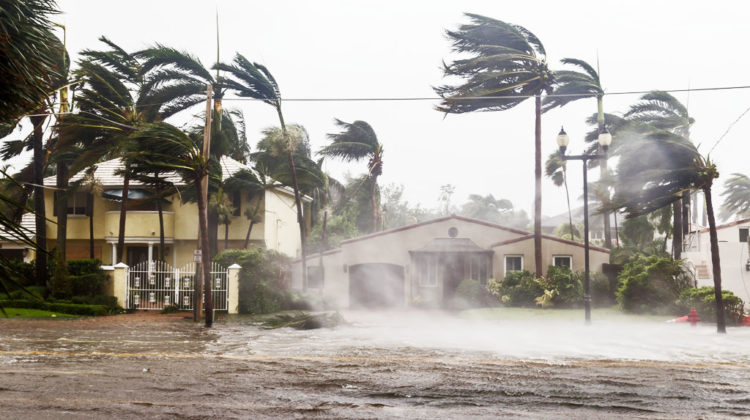
A team of University of Colorado Boulder researchers looking for ways to make wind turbines more hurricane-resilient has taken inspiration from palm trees and suggested that the answer may be to turn the turbines around.
‘We are very much bio-inspired by palm trees, which can survive these hurricane conditions,’ said Lucy Pao, the Palmer endowed chair in the university’s Department of Electrical, Computer and Energy Engineering.
Traditional upwind turbines face the incoming wind and their blades must be stiff in order to avoid them being blown into the tower. Hence, the blades must thick and massive, which requires a lot of material, which drives up their cost.
In contrast, the blades on downwind rotors face away from the wind, so there’s less risk of them hitting the tower when the winds pick up. This means that they can be lighter and more flexible, which requires less material and are thus cheaper. They can also then bend instead of break in the face of strong winds – much like palm trees.
Together with collaborators at the University of Virginia, the University of Texas at Dallas, the Colorado School of Mines and the National Renewable Energy Laboratory, Pao’s team has collaborated to develop the SUMR (Segmented Ultralight Morphing Rotor) turbine, a two-bladed, downwind rotor designed to test the performance of this lightweight concept in action.Having looked at four years of real-world data from testing their 53.38-kilowatt demonstrator (SUMR-D) at the National Renewable Energy Laboratory’s (NREL) Flatirons Campus, just south of Boulder, Colorado, they’ve found that their turbine performed consistently and efficiently during periods of peak wind gusts.
‘The blades are manufactured to be lightweight and very flexible, so they can align with the wind loads. That way, we can reduce the cost of the blades and bring down the cost of energy,’ said Mandar Phadnis, a graduate student in electrical, computer and energy engineering.
The work is particularly important because climate change not only demands that we quickly scale up more cost-effective and reliable renewable energy, but rising global temperatures are also causing hurricanes to intensify.
Pao’s team has also been making innovative improvements to the controller – the part of the turbine that determines when to be more or less aggressive in power production, aiming to smooth out the bumps caused by wind’s inherent inconsistency and produce efficient energy at low cost and with low wear and tear.‘Our work attempts to predict the likelihood or the probability of peak wind gusts occurring, and then tries to mitigate the speed peaks by acting before they happen,’ said Phadnis.
In a separate collaboration, Pao and her research group have been working with the University of Oldenburg in Germany to assess the utility of sensors that scan ahead of the turbine to measure the wind coming in and of advanced controllers that command the turbine to respond proactively.
The control algorithms that they’ve developed could be equally applicable to traditional three-bladed, upwind turbines, which still dominate both land and offshore markets. ‘The advantage of the downwind configuration, however, really comes about when you get to extreme-scale turbines, and those are primarily for offshore,’ said Pao.
Pao’s group is already addressing these great heights – with their collaborators, they’ve designed and modelled (but not experimentally tested) large-scale 25 MW and 50 MW SUMR (downwind) turbines. Ultimately, Pao believes that a combination of improved controllers, lighter and resilient materials, and strategic turbine configurations could allow giant offshore turbines to outpace the competition. They’re not only more cost-effective and energy efficient, allowing for one big turbine instead of many smaller ones (which would reduce installation and maintenance costs), and able to capture faster wind speeds higher off the ground, but they could also withstand the more severe weather that’s sure to come.


